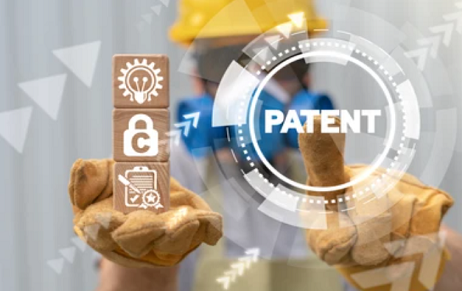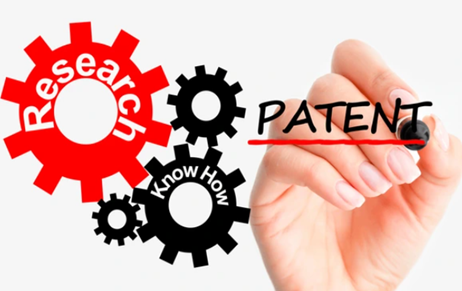The fifth generation of wireless technology (5G) is a transformative leap in mobile communications. This…
Global Perspectives on Patent Linkage: Insights from the US, Europe, and India
Introduction: Concept of Patent Linkage
Patent Linkage is the linking of the marketing approval of a drug to it’s patent status. Patent linkage pertains to the link between the market authorization of a generic medication and the patent status of its branded equivalent. According to this rule, a generic drug cannot receive marketing approval before the patent on the branded drug expires or until it is confirmed by the relevant authorities that the patent of the branded drug will not be violated or is invalid. Generic medications are pharmaceutical products typically designed to be interchangeable with a brand-name product. These drugs are produced without a license from the original manufacturer. In a system that follows patent linkage, generic products can be launched in the market only when patent protection and regulatory exclusivities have expired. Patent protection and regulatory exclusivities are distinct. They occur simultaneously and are not supplementary. They are subject to the jurisdiction of separate governing bodies. For instance, the USPTO awards patents while the US FDA grants exclusivities in the United States. Patent protection commences upon submitting a patent application, while regulatory exclusivity begins upon receiving approval from regulatory bodies.
Scenario of Patent Linkage in the US
In the US, the approval of generic marketing is contingent upon the expiration of the patent for the original medicine. Patents are awarded by the USPTO at any point during the lifespan of medication development, while exclusivity refers to the exclusive marketing rights granted by the FDA upon drug approval, which can occur simultaneously with or independently from a patent. The Drug Price Competition and Patent Term Restoration Act of 1984, sometimes referred to as the Hatch Waxman Act, legally acknowledges patent linkage in the United States.
In the US, the Orange Book, officially titled “Approved Drug Products with Therapeutic Equivalence Evaluations,” serves as a comprehensive reference for FDA-approved drugs, offering critical information on their safety and efficacy evaluations. This publication plays a crucial role in the pharmaceutical landscape by documenting details about approved drugs, those that have been discontinued, and the associated patents. The Orange Book not only lists the approved and discontinued drugs but also provides essential information regarding patents and exclusivity. There are two types of applications filed under the Hatch Waxman Act that become relevant here. A New Drug Application (NDA) is typically submitted by the innovator or brand-name drug manufacturer seeking approval for a new drug and is filed before the marketing of a new drug begins. An Abbreviated New Drug Application (ANDA) is filed by a generic drug manufacturer seeking approval to market a generic version of an already approved innovator drug. The ANDA applicant must demonstrate the bioequivalence of the generic drug to the reference-listed drug (RLD) by referring to the safety and efficacy data of the RLD.
Kinds Of Certifications inthe US
Whenever innovators file for a New Drug Application (NDA), they have to list all the patents related to that product in the orange book. According to Section 355 of the Hatch-Waxman Act, when generic companies file ANDA, they must address the patents listed in the orange book, and the FDA cannot approve a generic drug before the expiration of all the patents addressed. The applicant has to clearly identify and characterize the active pharmaceutical ingredient (API) and the formulation of the generic drug to ensure that the formulation is the same as the RLD. Detailed information about the RLD, including data on safety and efficacy, needs to be provided. The generic drug’s labelling, dosage form, and strength should match that of the RLD. Thereafter, the ANDA applicant needs to include a certification regarding any patents listed for the RLD in the Orange Book.
Based on the orange book listing, the generic can file 4 types of certifications or para-applications. The certifications to the FDA can be of the following types:
- Para 1 Certification: Here, the ANDA applicant certifies that there are no listed patents in the orange book.
- Para 2 Certification: The ANDA applicant certifies that all the listed patents in the orange book have expired.
- Para 3 Certification: The ANDA applicant certifies that the reference patent is about to expire. The drug will be marketed only after the expiration of the patent, i.e., the patent will expire on a certain date prior to FDA approval of ANDA. Tentative approval may be given, but final approval is only given after the expiration of patents.
- Para 4 Certification: Here, the ANDA applicant contends that the Orange Book listed patents will not be infringed or they are invalid or unenforceable. Here, the patent is challenged.
In a generic para 4 application, the applicant certifies to the US FDA that the applicant is challenging the orange book listed unexpired patent related to innovator product because the application believes that:
- applicant’s generic product is not infringing
- patent is invalid
- patent is unenforceable.
After filing such an application with the para 4 certification, the ANDA applicant, within 20 days, has to send notice to the innovator that they are challenging the Orange Book unexpired patents. The innovator or patent holder may file a court case within 45 days of notice. If no case is filed, the FDA will continue to review the application. If a case is filed, then there will be a 30 month stay on generic approval. The court will then decide the case based on its merits. If the case goes in favor of the generic applicant, they will get the first movers advantage. What the advantage effectively does is that it gives a 180-day exclusivity to the ANDA applicant for being the first to invalidate the patent. During this exclusivity period, there is only the ANDA applicant and originator drug company in the market. No other generic manufacturer can enter the market. If the case goes in favor of the innovator drug company, then the generic will not be approved till the expiration of the patent term. The generic manufacturer would not be able to proceed with their drug without facing potential patent infringement litigation. This could result in a delay in the entry of the generic drug into the market.
Kinds Of Exclusivity in The US
There are various regulatory exclusivities provided by the FDA, which include:
- New Chemical Entity exclusivity: This exclusivity prevents generic applicants from relying upon the original drug applicant’s data for 5 years from the date of NDA approval for a product containing a new chemical entity never previously approved by the FDA. An ANDA (para IV certification) may be submitted 4 years after approval of the NDA, but approval will only happen after the expiration of 5 years. This exclusivity can be extended by a 6-month pediatric exclusivity.
- Pediatric Exclusivity: It is the only add-on exclusivity and is provided for 6 months. Drugs can also get pediatric exclusivity when the FDA has sent a written request for the conduct of pediatric studies when, in the opinion of the FDA, such a drug could benefit the pediatric population.
- New Biological Drug Exclusivity: In the case of a new biological drug, a 12 year exclusivity period is granted. The period of exclusivity is the highest because of the higher cost involved in the invention of biological drugs. During this period, no biosimilar or generic drug can be approved, and if the generic drug is proven to be interchangeable with the reference drug, then an additional 1-year exclusivity is provided.
- New Clinical Data Exclusivity: In the case of new clinical data, a 3-year exclusivity period is granted. The new chemical data may be related to new indications, dosage, strength, dosage form, route of administration, etc.
- Orphan Drug Exclusivity: This exclusivity is granted in case of rare diseases. Any drug approved for orphan or rare diseases will have a 7-year data exclusivity. Orphan or rare diseases are those having less than 2 lakh patients. Even if the number of patients is not less than 2 lakhs, a company can still file a justification for orphan exclusivity stating that they will not be able to recover drug development and manufacturing costs. Here, only orphan indication is protected, so exclusivity does not block approval of the same drug for a different indication and for other versions of the drug if it offers a clinical advantage over prior drugs, such as better safety, tolerability, etc.
Scenario Of Patent Linkage in Europe
The European Union (EU) does not follow patent linkage. It believes that tampering with bolar provisions through patent linkage will undoubtedly postpone the arrival of generic pharmaceuticals into the market. The EU does not prevent the experimentation and generation of test results for any patented product, which can then be submitted to the registration body for marketing approval. In the EU, the European Medicines Agency (EMEA) decides on drug approval, which does not look at whether there is a patent on the original drug when deciding this. Regulation EC 726/2004 and Directive EC 2001/83 say a drug can only be denied approval for specific grounds listed in the Regulation and Directive. Patent status is not one of the grounds thus there is no linkage.

Scenario Of Patent Linkage in India
Indian drug companies excel in producing generic and bio-similar drugs. Companies making brand-name drugs want patent linkage in India, too. However, studies like the one by Bouchard suggest that patent linkage can lead to the ever-greening of pharmaceutical patents. India’s patent law tries to prevent this by having provisions such as Section 3(d) and pre-grant opposition. In India the Bolar provisions are enshrined under Section 107A of The Patents Act, 1970. India does not have a formal system of patent linkage, and the approval of generic drugs is generally based on the regulatory requirements related to safety, efficacy, and quality. This ensures easy and affordable access to life-saving drugs in India. A lack of patent linkage can encourage innovation by allowing generic manufacturers to introduce their products to the market sooner. This could lead to increased competition and, in turn, spur innovation among pharmaceutical companies to develop new and improved drugs. In Bayer Corporation and others v Union of India the Delhi High Court said that there is no patent linkage in India.
Conclusion
In conclusion, the examination of patent linkage practices across the United States, Europe, and India reveals distinct approaches and philosophies governing the intersection of pharmaceutical patents and generic drug approvals. The US, guided by the Hatch-Waxman Act, integrates a comprehensive system of patent linkage through the Orange Book, New Drug Applications (NDAs), and Abbreviated New Drug Applications (ANDAs). The intricacies of certifications and exclusivities, along with legal procedures, shape the landscape for generic entry. Meanwhile, Europe diverges from patent linkage, prioritizing the testing and generation of results for any patented product, as demonstrated by the European Medicines Agency (EMEA). The EU emphasizes data and marketing exclusivities to incentivize innovation. On the other hand, India, known for its robust generic industry, maintains a patent system without formal patent linkage. Legal provisions such as Section 3(d) and pre-grant opposition work to prevent the ever-greening of pharmaceutical patents. While the US and Europe grapple with balancing innovation and generic competition, India’s approach ensures accessibility to life-saving drugs and fosters a competitive pharmaceutical landscape. The comparative study underscores the nuanced strategies and regulatory frameworks that govern patent linkage practices globally.
Author: Sukeerti Samalei Mishra, in case of any queries please contact/write back to us via email to chhavi@khuranaandkhurana.com or at IIPRD.
References:
- https://www.mondaq.com/india/patent/581100/bolar-exemption-in-indian-patent-law-is-section-107aa-an-exception-or-an-enabling-provision
- https://www.ncbi.nlm.nih.gov/pmc/articles/PMC8504843/
- https://www.fda.gov/drugs/abbreviated-new-drug-application-anda/patent-certifications-and-suitability-petitions
- https://nopr.niscpr.res.in/bitstream/123456789/20282/1/JIPR%2018%284%29%20316-322.pdf
- https://www.lexology.com/library/detail.aspx?g=3ce16be1-e2bd-4bc6-9ebb-f2f82c6e375d#:~:text=Rosebush%20discussed%20five%20types%20of,license%20application%20(BLA)%20exclusivity.
- Bouchard R, Empirical analysis of drug approval-drug patenting linkage for high value pharmaceuticals, Northwestern Journal of Technology & Intellectual Property, 8 (2) (2010) 174-227..



